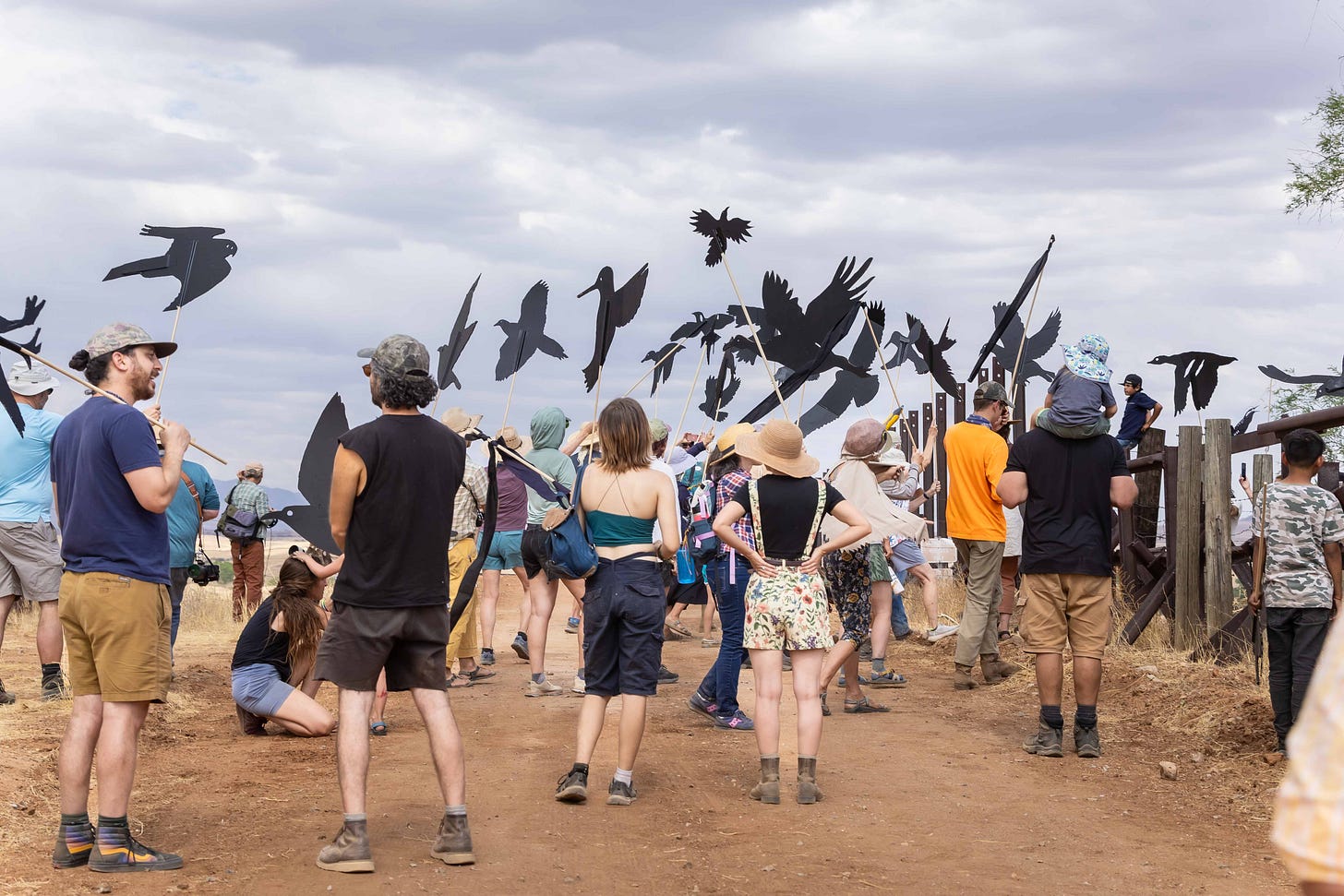Murmuration: A Conversation with Kate Scott about Resistance at the Border
A cross-border gathering evokes a creative world of “gritty hope” in the face of new wall construction.

On May 31, I went to the U.S.-Mexico border in Lochiel, Arizona, for a cross-border celebration called the Binational Border Happening. When I arrived, in the shade of two immense cottonwood trees split by a metal fence and vehicle barrier, there wer…
Keep reading with a 7-day free trial
Subscribe to The Border Chronicle to keep reading this post and get 7 days of free access to the full post archives.

